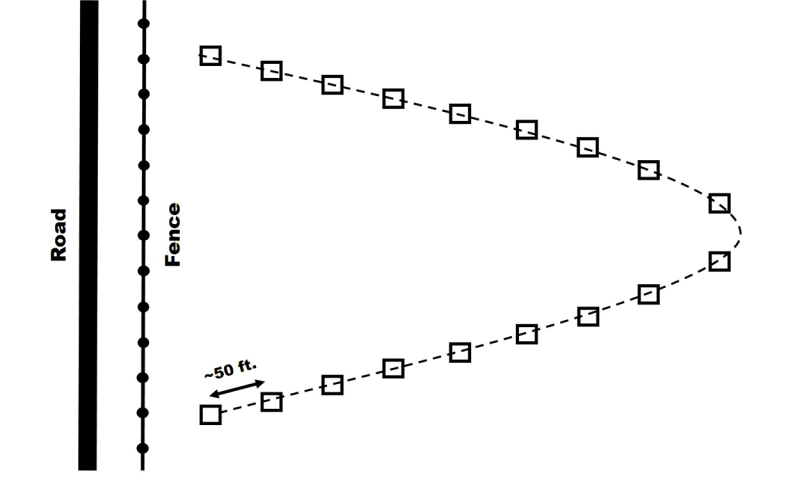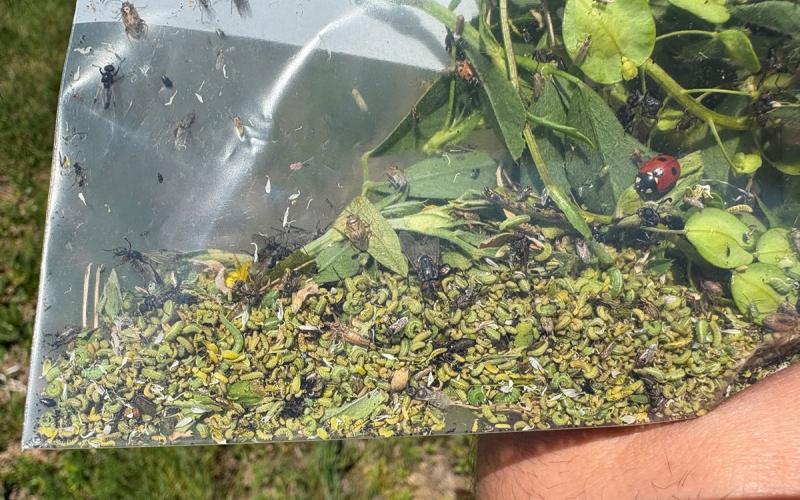Originally Submitted: July 12, 2024
Abundant precipitation throughout many areas of South Dakota has resulted in less grasshopper observations. However, in areas where grasshoppers were an issue in 2023, grasshoppers are starting to show up again. The delay in grasshopper observations can be attributed to the abundance of alternative food sources that have been present this year due to spring and summer rain. However, as these alternative food sources begin to become scarce due to mowing, spraying, or natural plant life cycles, the grasshoppers will look elsewhere for food. Many of the grasshoppers that we have recently observed are still in the nymphal stages, which are much easier to manage than adult grasshoppers.
Scouting and Management Options

For visual counts, estimate a square-yard in front of you and count the number of grasshoppers that are present/moving within the area. We recommend repeating this step several times in a pattern, such as the example in Figure 1, and calculating the average for increased accuracy.
The threshold for grasshopper populations is 15 to 20 nymphs or 8 to 10 adults per square-yard. Defoliation thresholds vary for each crop, and defoliation may also be caused by other insects.
If grasshopper populations are observed that are above the recommended threshold, an insecticide application is recommended. A current list of insecticide sprays for use can be found in the latest South Dakota Pest Management Guides.


